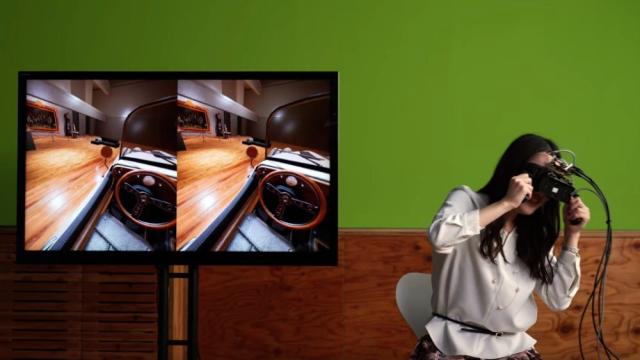Today, Sony held an online event called Sony Technology Day to showcase different technology that the company is developing. One presentation showed Sony’s prototype for an 8K VR headset.
The prototype uses two small 4K displays, creating an 8K viewing experience. This is not the first 8K headset, and the above image does not show a finalised commercial product. With the prototype, Sony is integrating low latency tech to allow for a realistic, yet natural and comfortable VR experience. If the final product does what Sony says is possible, then this could help an even greater number of people enjoy VR without motion sickness or other issues.

“We aim to achieve smaller, lighter, ultra high-resolution head-mounted displays and to create spaces for people to interact over the network,” said Sony’s Kei Kimura of the company’s R&D Centre. “Ultimately, we’d like to create an astonishing sense of immersion for remote collaboration and sharing.”
One reason that current generation VR might be uncomfortable for some users is that it’s possible to see pixels. However, Sony says by increasing the number of dots in the OLED microdisplays, it’s possible to show greater detail and avoid pixelization. By reducing the latency through data from the sensors, users can freely look around without feeling dizzy. All of this allows users to look closer at objects in the virtual world, creating a life-like experience in real time.
Here is how Sony describes the tech:
This is a virtual reality (VR) head-mounted display (HMD) that projects a high-definition 3D space and achieves a high-resolution of 4K with one eye and 8K with both eyes. High image quality is achieved through multi-pixel and miniaturization using fine processing and advanced packaging technology cultivated through the development and manufacture of CMOS image sensors, and Organic Light Emitting Diode (OLED) microdisplay using device and circuit technology cultivated through the development of displays. The processing time is reduced by decreasing the amount of latency throughout the entire system thanks to the integration of data from multiple sensors. The person watching in VR can experience high-definition images in real time according to the movement of his/her head.
Sony sees this VR tech finding its way into gaming and other types of entertainment like music, as well as in medical training and even industrial manufacturing.

As someone who’s had some good experiences in VR but many not-so-good ones, efforts to make the experience more natural and less nauseous are welcomed.
